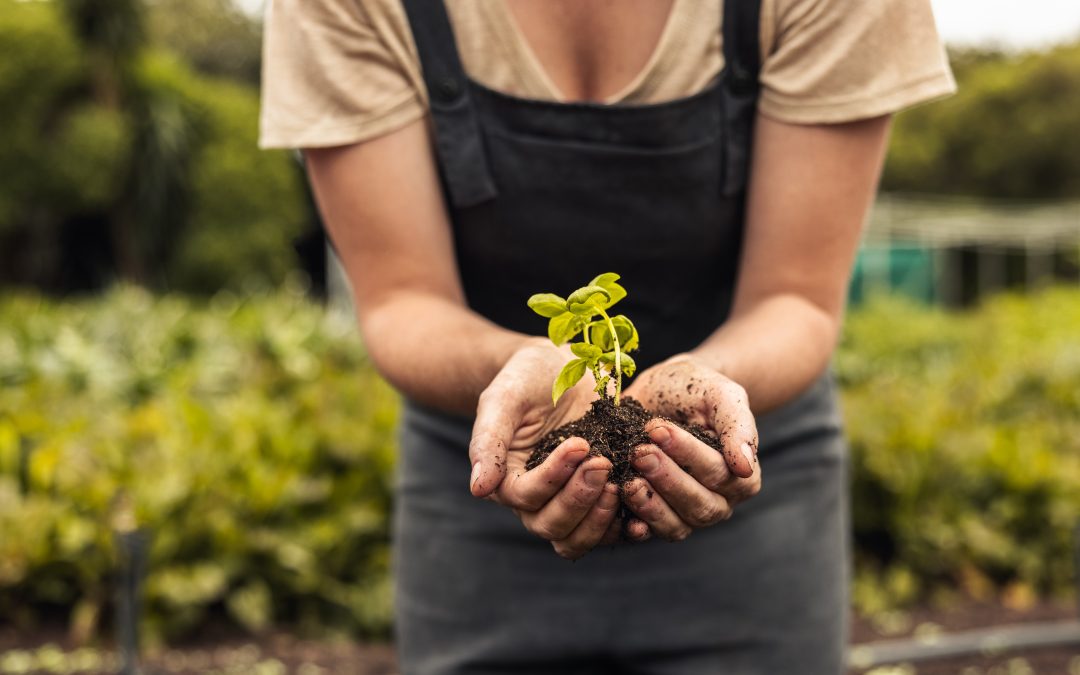As the days warm, many people are excited to start a family garden. The beds may be prepared with soil and plant food, and families will soon be selecting their favorite vegetable seeds or plants to add to the gardens. The benefits of even a small garden go far beyond just the crop it will produce. A garden can influence wellness across many dimensions.
Various sources break wellness down into 4 to 11 dimensions. The Substance Abuse and Mental Health Services Administration (SAMSA, 2016) describes these 8 dimensions in its wellness initiatives on its wellness wheel: social, emotional, spiritual, intellectual, environmental, financial, and occupational. This article will highlight 6 of these dimensions of wellness and how a family garden can influence them. Physical wellness involves the physical body and its functioning. Physical wellness is impacted by nutrition, sleep, physical activity, and body system functioning.
Emotional wellness relates to a person’s ability to experience and tolerate a full range of emotions and express them in healthy ways. Emotional wellness includes the ability to manage stress and maintain a positive outlook on life in general.
Social wellness is our ability to build and maintain healthy relationships with others.
According to SAMSA (2016), spiritual wellness “is a broad concept that represents one’s personal beliefs and values, and involves having meaning, purpose, and a sense of balance and peace.” Spirituality can involve religious beliefs.
Environmental wellness is being present and respectful to our natural world and its resources. And, intellectual wellness involves the desire to continue to learn and grow your accumulation of knowledge.
The following are examples of some of the wellness benefits from gardening:
- Quality time with each other working together in the garden as a team toward a common goal is beneficial for each family member’s social wellness. You may even strengthen relationships with your neighbors if you share your harvest.
- Gardening builds confidence in children when they see their hard work result in food for the family, boosting their emotional wellness. Gardening can reduce stress, depression, and anxiety naturally for some people, which can also lead to improved emotional well-being (Hutchinson, 2020).
- Gardening can also result in many benefits to physical wellness. Some of these benefits include:
— Everyone in the family gets an extra boost of vitamin D from their time spent outdoors. Vitamin D is produced when the skin is exposed to natural sunlight. Working in the garden gives plenty of opportunity for natural sunlight.
— Physical activity benefits include burning up to 330 calories (about 19 minutes of running) per hour while gardening, according to the Centers for Disease Control and Prevention (2020), and this can improve cardiovascular fitness. The repeated movements involved in pulling weeds and removing ready-to-pick foods can lead to increased hand strength and dexterity.
— There are certainly nutritional benefits of having healthy food readily available. If you plant a colorful variety of fruits and vegetables, not only will you have a visually appealing garden, but you will also have a variety of vitamins and minerals to consume.
— There are beneficial bacteria found in soil that have been shown to decrease allergies and increase the strength of the immune system (Hutchinson, 2020). - It is healthier for the environment if the family can produce its own food and reduce transportation and packaging. This improves environmental wellness. Spending time in nature is also beneficial to environmental well-being.
- When a family experiences a seed turning into a full-grown plant and food for their nourishment, it can create a sense of awe that stokes spiritual well-being
- Intellectual wellness is improved as the family increases their knowledge of what plants need to grow and thrive, and the benefits they provide.
To ensure the safest garden for your family, make sure to use only food-safe fertilizers and pesticides. Wash the fruits and vegetables under running water before consuming. Firm produce should be scrubbed with a produce brush. Store cut and washed produce in the refrigerator at a maximum temperature of 41°F. Sharon McDonald (n.d.) provides additional tips regarding safe handling and storage of fresh produce in the Farmers Market Storage Postcard, on the Penn State Extension Webpage.
If the garden yields more produce than your family can consume and you want to store some away for the winter, make sure you are using safe preservation methods for freezing, canning, or drying. Penn State Extension (n.d.) offers home food preservation information on various preservation practices in the Let’s Preserve Series.
Knowing how a family garden can positively impact all dimensions of wellness may increase the excitement of starting a garden this year. We are wishing everyone a bountiful harvest.
Sources: Penn State Extension- https://extension.psu.edu/the-family-garden

